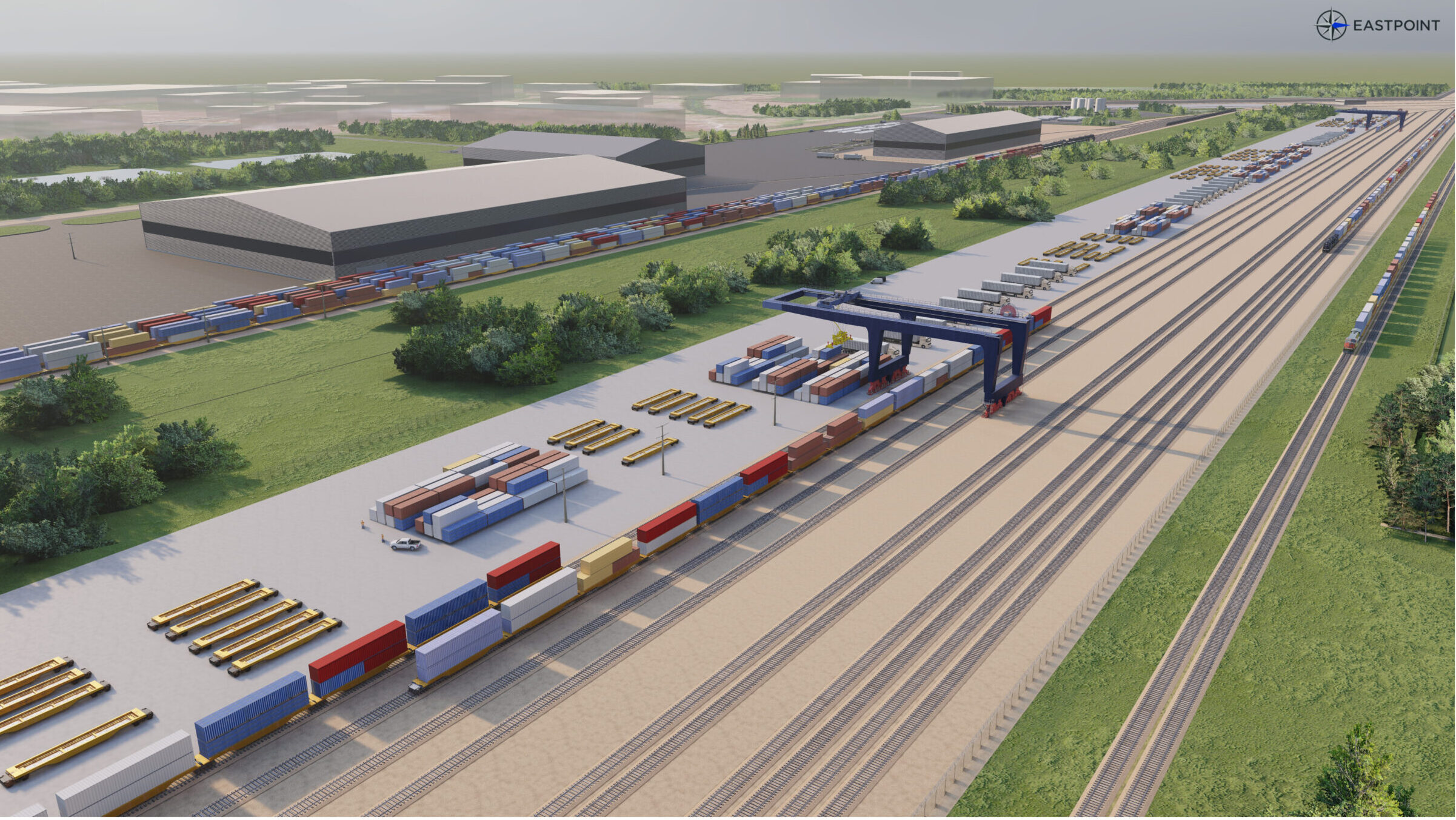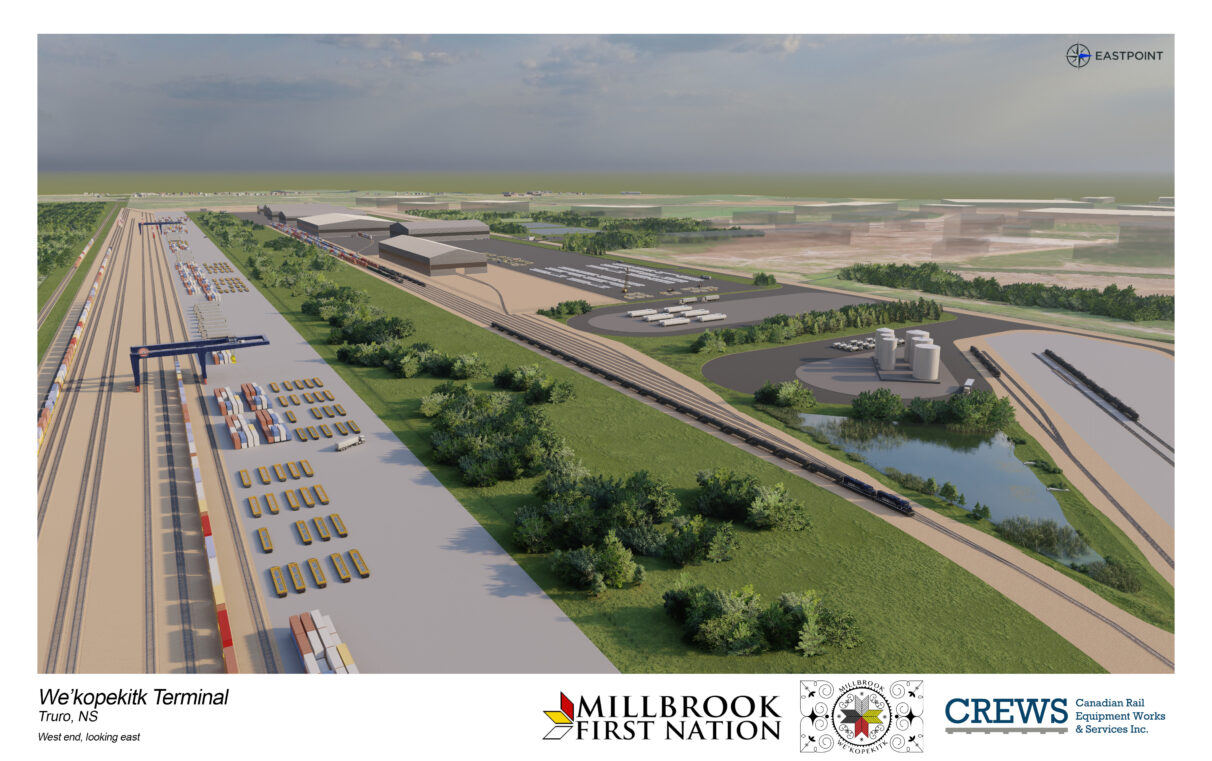Millbrook First Nation partners with rail company for inland shipping terminal
Planners hope facility will increase efficiency and alleviate traffic congestion in downtown Halifax

caption
A digital rendering of the proposed in We'kopektik inland rail terminal in Onslow, N.S on Monday.Plans for a large inland shipping terminal were announced Monday between Millbrook First Nation and Canadian Rail Equipment Works and Services (CREWS) in partnership with the Halifax Port Authority.
The We’kopekitk terminal, a joint venture, is set to be built in Onslow, near Truro, on lands adjacent to the Trans-Canada Highway.
“We’kopekitk in Mi’kmaq means the end of the water flow, signifying the region that feeds the Shubenacadie and Salmon rivers. This area has been a traditional trade and transportation route for our people for thousands of years,” said Bob Gloade, chief of Millbrook First Nation, over video conference at the Halifax PIER.
He added that the terminal will “create generational economic change for our community and ultimately establish a more streamlined infrastructure that would ensure supply chain efficiencies for the entire region.” Related stories

caption
Millbrook First Nation Chief Bob Gloade announces construction of a new inland rail terminal over video conference, in Halifax on Monday.Digital site renderings showed a large facility with multiple rail tracks, warehouses and parking. The terminal will be similar in size to the CREWS terminal in Johnstown, Ont., more than 4 kilometres long and housed at ScotiaPort, a 23,000-acre planned industrial development park.
It will have room to store about 1,000 railcars and facilitate the transfer of containers and trailers between rail and truck. According to CEO and president of CREWS Clayton Jones, when the project is ready, containers will be able to move from the Halifax port by rail to Onslow instead of being trucked out.
Jones hopes construction of the terminal starts in 2024 and is ready for operation by 2025. He said the facility should employ “modestly 300 people.”

caption
A digital rendering of the proposed in We’kopektik inland rail terminal in Onslow.“I think anyone who’s in the art of designing inland terminals would be drooling over the opportunity that Millbrook put on the table here,” said Allan Gray, president and CEO of the Halifax Port Authority.
Gray said the facility will help traffic congestion by reducing truck traffic from the city’s south end container terminal through Halifax’s downtown core.
As well, the cargo will move more quickly out of the city. He also said the new facility will also be more energy efficient and contribute to reduced emissions.
“Inland terminals allow efficiency across the supply chain at a better cost than what we can achieve by just putting … more storage spaces in the port,” said Gray. “We can’t keep doing things the same way we’ve done them for 100 years,” he said.
Executive director of Millbrook First Nation Claire Marshall said revenue from the new We’kopekitk land terminal and ScotiaPort will go towards Millbrook’s infrastructure, housing and social services.
“It’s an ideal location for trade, given that it’s just a quick, less than an hour drive to Halifax from the location. So, it’s quite a significant area for Millbrook First Nation,” she said.
About the author
Giancarlo Cininni
Giancarlo Cininni is completing his fourth year of the BJH program. He has experience reporting in Brazil and Canada. When he is not staring...
